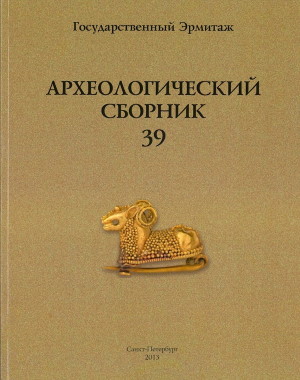 Л.Л. Баркова
Л.Л. Баркова
Технологическая характеристика шерстяных тканей
из Больших Алтайских курганов.
См. файл .pdf, 1,5 Мб.
(54/55)
. . .
Литература. ^
1. Глушкова Т.Н. Плетение и ткачество в раннем железном веке (по материалам могильника Ак-Алаха-1) // Полосьмак Н.В. Стерегущие золото грифы. Новосибирск, 1994. С. 114-121.
2. Глушкова Т.Н. Традиции изготовления пазырыкских тканей // Феномен алтайских мумий. Новосибирск, 2000. С. 120-121, 158-161.
5. Каковкин А.Я. Коптские ткани из фондов Эрмитажа: кат. выст. Л., 1978.
7. Клочко И.С. Скiфський жiночий костюм: автореф. дис. ... канд. iст. наук. Київ, 1992.
9. Лазарев Н.И. Описание красок, употребляемых и предложенных для употребления на жидкостях в картинной и декоративной живописи и при окраске зданий. СПб., 1869.
10. Марсадолов Л.С. Исследования в Центральном Алтае (Башадар, Талда). Саяно-Алтайская экспедиция Государственного Эрмитажа. Вып. I. СПб., 1997.
11. Пиотровский Б.Б. Кармир-Блур III. Результаты раскопок 1951-1953 гг. Ереван, 1955.
21. Barber E.J.W. Prehistoric Textiles: The Development of Cloth in the Neolithic and Bronze Age, with Special Reference to the Aegean. Princeton, 1991.
22. Barber E.J.W. The mummies of Urumchi. New-York; London, 1999.
23. Bellinger L. Textiles from Gordion. The Bulletin of the Needle and Bobbin Club. Vol. 46. 1962.
24. Bunker E.C. The Cemetery at Shanpula, Xinjiang, Simple Burials, Complex Textiles // Fabulous Creatures from the Desert Sands. Riggisberg, 2001. P. 15-47.
25. Desrosiers S. Une culture textile raffinée // Keriya, memoires d’un fleuve. Archeologie et civilization des oasis du Taklamakan. Paris, 2001. P. 144-155.
26. Schorta R.A. Group of Central Asian woolen textiles in the Abegg-Stiftung Collection // Fabulous creatures from the desert sands. Central Asian Woolen Textiles from the Second Century BC to the Second Century AD. Riggisberg, 2001. P. 79-115.
27. Stauffer A. Textilfunde aus Arzan 2 // Der skythenzeitliche Furstenkurgan Arzan 2 in Tuva. Mainz, 2010. S. 199-210.
(55/56)
. . .
(/301)
Summaries ^
L. Barkova
A technological characterisation of woollen textiles from the Great Altai kurgans.
The paper discusses woollen textiles made in such techniques as weaving, knitting, and braiding, from the Great Altai kurgan barrows of the 6th – 3rd centuries BC. The textiles were mostly made of underwool threads with a fi brefineness of 18-23 microns and transitional hair with a fi neness of 30-50 microns. The study of pelts found in the Pazyryk barrows shows that this is consistent with the wool of Altai sheep. The threads were twisted using a Z scheme, i.e. twisting it to the right; the warp threads were more tightly twisted than the weft threads. This technological tradition of yarn-making is typical for the whole Asian region. Ancient Altai textures are subdivided in terms of their structure into plain, looped and twill weaves. Twilling was the prevalent method. The density of weave along the warp is between 10 and 20 threads per 1 cm and 17-72 threads along the weft. All textiles are single-colour without any decorations, the majority are dyed red or bluish-green.
Researchers from Novosibirsk have studied the dyes preserved on the textiles from the Ukok Plateau, Pazyryk, Arzhan I and II. The composition of the dyes was linked to the Mediterranean. According to N. Polosmak, the Pazyryk people themselves did not make the textiles. The question of the local production of the majority of ancient Altaic threads remains unanswered, since no material evidence for the weaving industry (spindle whorls, spindles, remnants of looms) has so far been discovered.
|